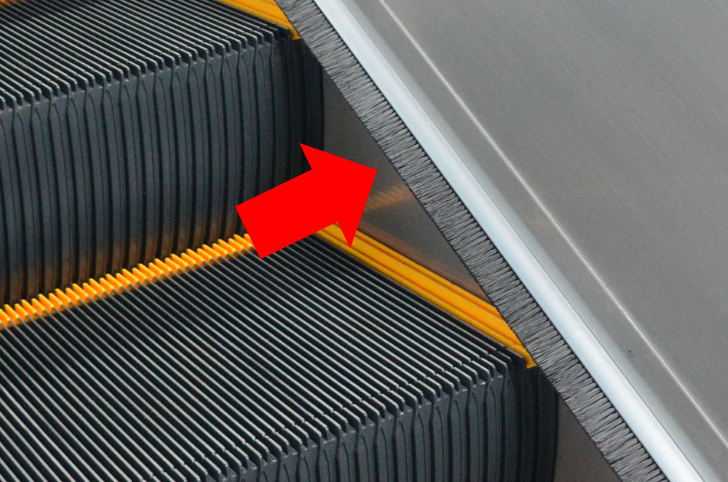Escalators are ubiquitous in modern infrastructure, providing efficient vertical transportation in places like shopping malls, airports, and transit stations. A common feature observed on many escalators is the presence of brushes running along the sides, adjacent to the moving steps. While some individuals might assume these brushes are intended for cleaning purposes, their primary function is rooted in safety.
Understanding the Escalator’s Skirt and the Role of Brushes
The vertical panels flanking the moving steps of an escalator are referred to as the “skirt.” The narrow gap between the steps and the skirt poses potential hazards, as items like footwear, clothing, or personal belongings can become entrapped, leading to injuries or mechanical malfunctions. To mitigate these risks, manufacturers have integrated brushes, commonly known as “skirt deflectors” or “safety brushes,” along the skirt’s length. These brushes serve as a tactile and visual deterrent, encouraging passengers to maintain a safe distance from the escalator’s edges.
Historical Context and Safety Standards
The incorporation of skirt deflectors into escalator design became a focal point in safety discussions in the late 20th and early 21st centuries. In the United Kingdom and Europe, the British and European standard BS EN115-1:1995 addressed the safety of escalators and moving walks, including considerations for skirt deflectors. However, it wasn’t until the amendment A2 in 2004 that the installation of these brushes became mandatory. This regulatory change underscored the importance of minimizing entrapment risks associated with the step-to-skirt gap.

Mechanism of Action
The brushes are strategically positioned just above the moving steps, with bristles extending outward from the skirt. When passengers inadvertently come into contact with these brushes, the sensation prompts them to adjust their position away from the escalator’s edges. This subtle guidance helps prevent items such as loose clothing, shoelaces, or bag straps from entering the hazardous gap between the steps and the skirt. By deflecting potential obstructions, the brushes play a crucial role in averting accidents and ensuring the smooth operation of the escalator.
Common Misconceptions
A prevalent misconception is that these brushes are designed for cleaning purposes, particularly for removing dirt from passengers’ shoes. This belief can lead individuals to intentionally make contact with the brushes, inadvertently increasing the risk of entrapment. It’s essential to recognize that the primary purpose of skirt deflectors is safety, not cleanliness. Encouraging deliberate contact with the brushes contradicts their intended function and can compromise passenger safety.
Safety Recommendations for Escalator Use
To enhance safety while using escalators, consider the following guidelines:
- Stay Centered: Position yourself in the middle of the step, avoiding proximity to the skirt panels.
- Mind Your Attire: Ensure that loose clothing, shoelaces, and accessories are secured to prevent them from getting caught.
- Hold the Handrail: Utilize the handrail for stability and balance during transit.
- Supervise Children: Always hold children’s hands and remain vigilant to prevent accidents.
- Avoid Distractions: Refrain from using mobile devices or engaging in activities that divert attention while on the escalator.
- Promptly Exit: Upon reaching the end of the escalator, move away swiftly to prevent congestion and potential mishaps.

By adhering to these practices and understanding the purpose of escalator features like skirt deflectors, passengers can contribute to a safer and more efficient transit experience.
In summary, the brushes along the sides of escalators are integral safety components designed to prevent entrapment by guiding passengers away from potential hazards. Recognizing their true purpose and using escalators responsibly can significantly reduce the risk of accidents and enhance overall safety.

















